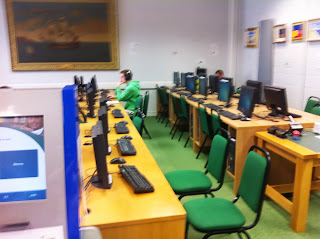I created a YouTube play list to gather the video's from YouTube that I used while lecturing. The play list can be seen at http://www.youtube.com/playlist?list=PL7nBWI1Wb_nCdJmbpAjUdtAFJ0lmX_tOo
Even though YouTube is now the second most used search engine,some of the topics we were covering proved to be challenging in relation to locating relevant video material to illustrate the point.
See more at http://socialmediatoday.com/socialbarrel/1650226/second-largest-search-engine-infographic
Making the play list was easy.
I gathered the listings/ links from the reading list and the lectures.
I logged onto my Google Account (YouTube and Google are one log in now) and went to YouTube.
Next I clicked on new play list, entered the title, and made it public,
Then I entered the details and added the videos by url.
It took a while for the list to complete because of the number of videos added.
Finally I added art - made with Wordle and Adobe Firework. Positioning this correctly was the most challenging part of the process.
Even though YouTube is now the second most used search engine,some of the topics we were covering proved to be challenging in relation to locating relevant video material to illustrate the point.
See more at http://socialmediatoday.com/socialbarrel/1650226/second-largest-search-engine-infographic
Making the play list was easy.
I gathered the listings/ links from the reading list and the lectures.
I logged onto my Google Account (YouTube and Google are one log in now) and went to YouTube.
Next I clicked on new play list, entered the title, and made it public,
Then I entered the details and added the videos by url.
It took a while for the list to complete because of the number of videos added.
Finally I added art - made with Wordle and Adobe Firework. Positioning this correctly was the most challenging part of the process.























